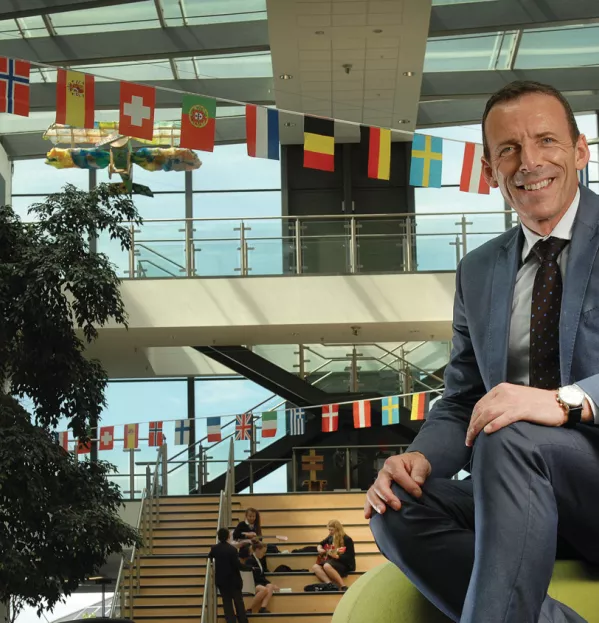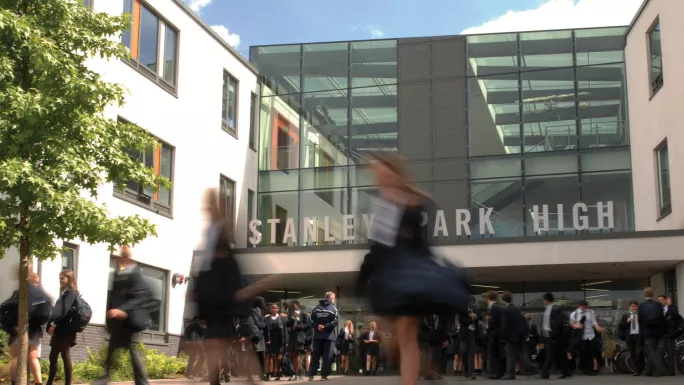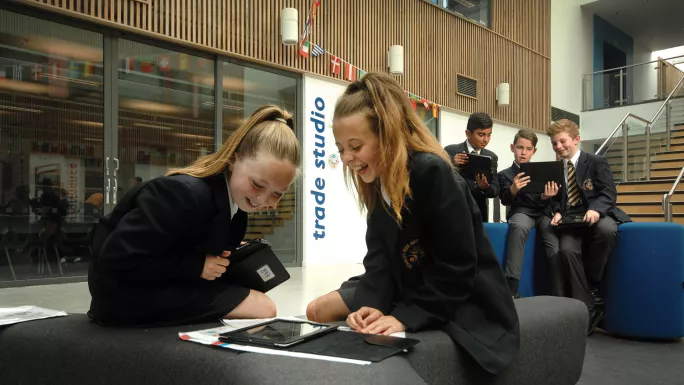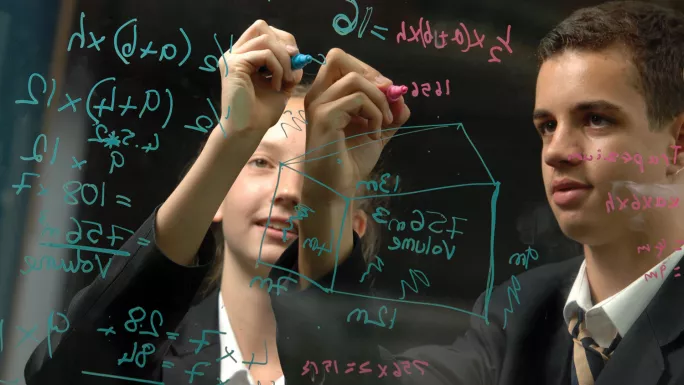How to beat the rest with a back-of-a-napkin philosophy

Displays are a big feature of the corridors at Stanley Park High. There are silhouette Jekyll and Hyde figures outside an English classroom; brightly coloured masks along the art corridor; and a disembodied model head next to the hair and beauty salon.
Less visibly arresting is the group of four framed pictures, three large and one small, on one of the school’s quieter corridors.
The three larger frames hold sheets of flip-chart paper, each covered with writing, bullet points and flow charts. On closer inspection the smaller one - featuring the same handwriting - turns out to be a paper napkin.
“It suddenly hit me,” says executive headteacher David Taylor.
“I thought, ‘I have got it. I understand what I want from my school.’ I wrote it down on a napkin in a cafe in Copenhagen.”
The three sheets and a napkin have a good claim to be the founding documents of a reincarnated school.
Ten years after they were written, the words at the top of the napkin - “project-based learning” and “flexibility in the timetable” - are still the cornerstone of the school’s philosophy.
Stanley Park, winner of the secondary school of the year in this year’s TES Schools Awards, is a non-selective school in a highly selective area. The London borough of Sutton, on the capital’s south-west fringe, has five grammar schools and a number of other schools that select by aptitude.

A secondary modern in all but name, Mr Taylor says that when he took over in 2005, Stanley Park was unloved by parents and poorly thought of in the local community.
A year after his appointment, he began seeking out innovative schools at home and abroad. As he put his plans together, it was a visit to a school in Copenhagen that helped him fill in the missing pieces of the puzzle.
“I realised that the crux of all of this is the absolute primacy of relationships,” he says. “It was a time when relationships were fraught. The kids weren’t getting on with the teachers, and the teachers weren’t getting on with parents. But here [in Copenhagen] was a school where the kids were articulate and self-confident, and when I saw the way they interacted with their teachers, I thought that was what it should be like. That became very much the inspiration.”

The crux of all of this is the absolute primacy of relationships
His starting point was a schools-within-a-school model. When pupils arrive at Stanley Park in Year 7, they are divided into four schools. Horizon is the smallest and serves children with special needs. The other pupils are divided equally into Trade, Performance and World, each located in a separate part of the building, and remain in those schools throughout their time at Stanley Park.
This is done largely randomly, Mr Taylor says, although each school has an equal number of boys and girls, and a mix of abilities.
A novel approach
What really marks Stanley Park out, though, is the combination of this structure with a novel approach to the curriculum.
In Years 7 and 8, pupils study English, maths, science, PE, music and French as separate subjects, but all other subjects are taught under the banner of Excellent Futures Curriculum (EFC), a programme designed by the school’s teachers.
Year 7 pupils have 12 EFC lessons a week, covering geography, history, RE, drama, art, business studies and ICT, among other subjects, while Year 8 has eight. They have the same teacher for all their EFC lessons, which are based around project work.
The pupils know that they are doing real-world training
“In Year 7, most schools have the model of moving from one primary teacher to 14 teachers, which in my opinion is bonkers,” says Mr Taylor. “This [adopted system at Stanley Park] helps the transition and means every child is known and valued.”
Teaching 12 lessons a week makes it easier to get to know the pupils, says Katie Alden, lead EFC practitioner for Trade. Project-based learning also means pupils are working towards a concrete goal, whether it is an exhibition, a play or the welcome booklet Year 7s produce every year for the next intake.
“I love the flexibility it allows you and when they know their work is going to be seen by outsiders, it raises the level of what they do,” she says. “The pupils know that they are doing real-world learning.”

Pupils are regularly taught at least part of an EFC lesson in classes of 70 - the entire school-within-a-school year group - with three teachers sharing the load.
“It was a bit daunting at first, but working alongside other teachers is really powerful,” says Ms Alden.
“When I was teaching in my own classroom, I was reflective on my own, but seeing others teach makes a massive difference.”
Mr Taylor acknowledges that it was made considerably easier to realise his vision by being able to have a say in the design of Stanley Park, rebuilt under the Building Schools for the Future programme.

This enabled the creation of classrooms able to accommodate 70 children, as well as the large central atrium where pupils mingle at break times - an atrium that is transformed into a performance space on Fridays.
“We have an open mic where people get up and sing, and nobody takes the mick,” says Louie, in Year 8. “And if it’s not open mic, it’s bingo or just music. Everyone comes in here.”
“At the beginning [of Year 7], we did lots of activities to get to know each other,” adds Lily, also in Year 8. “I know it sounds weird, but I feel as if I’m in a family.”
You need a Tes subscription to read this article
Subscribe now to read this article and get other subscriber-only content:
- Unlimited access to all Tes magazine content
- Exclusive subscriber-only stories
- Award-winning email newsletters
Already a subscriber? Log in
You need a subscription to read this article
Subscribe now to read this article and get other subscriber-only content, including:
- Unlimited access to all Tes magazine content
- Exclusive subscriber-only stories
- Award-winning email newsletters